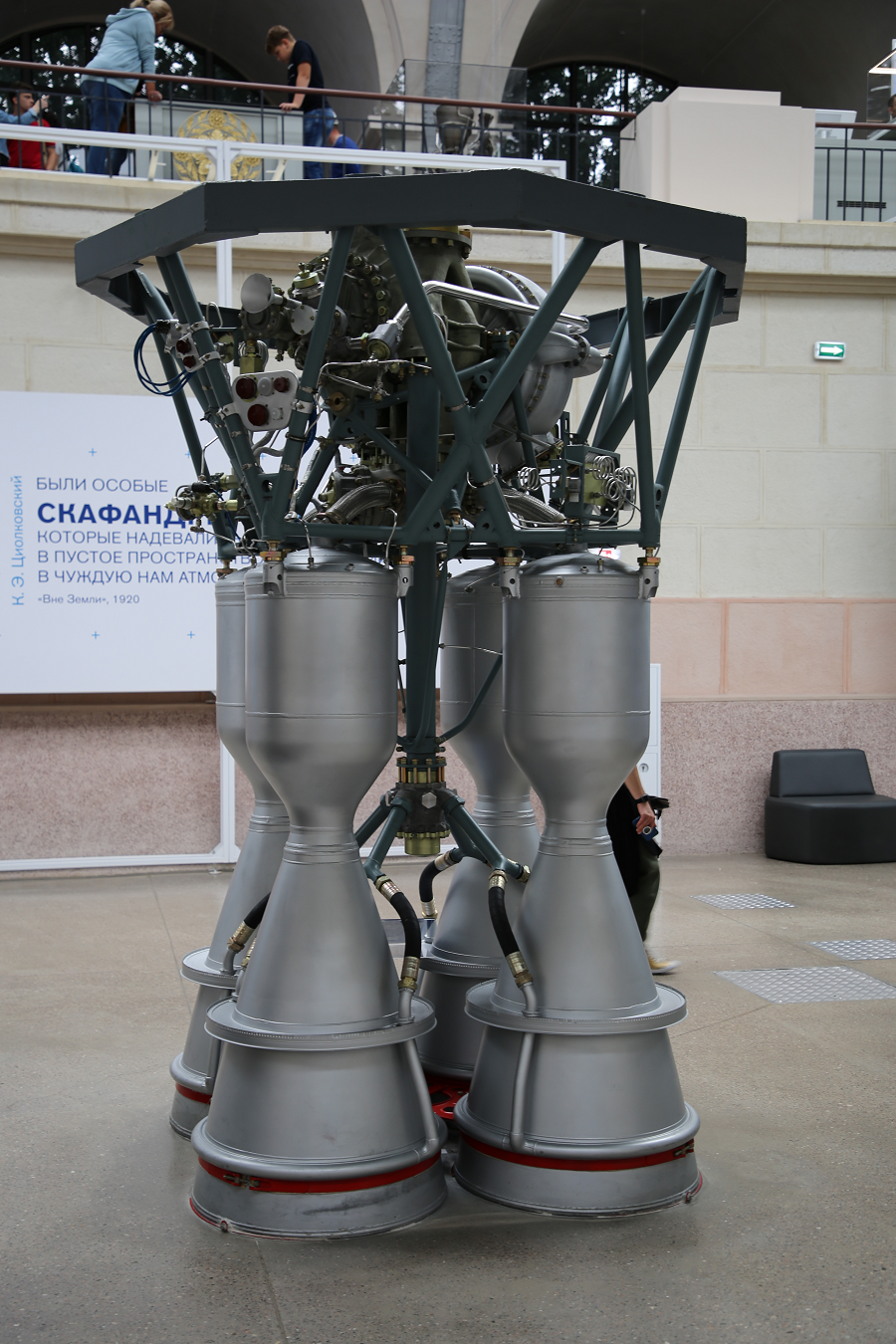Liquid-propellant rocket engine RD-107A (actual sample). Designed by V. Glushko in 1954. RD 107 engines put the first artificial Earth satellite into orbit, delivered the first human living into space and powered the first manned space flight.
The RD-107 and its sibling, the RD-108, are a type of rocket engine initially used to launch R-7 Semyorka missiles. RD-107 engines were later used on space launch vehicles based on the R-7. As of 2021, very similar RD-107A and RD-108A engines are used to launch the Soyuz-2.1a, and Soyuz-2.1b, which are in active service.
The RD-107 was designed under the direction of Valentin Glushko at the Experimental Design Bureau (OKB-456) between 1954 and 1957. It uses liquid oxygen and kerosene as propellants operating in a gas generator cycle. As was typical by all the descendants of the V-2 rocket technology, the turbine is driven by steam generated by catalytic decomposition of H₂O₂.
The steam generator uses solid F-30-P-G catalyst. These are based on a variable sized pellet covered in an aqueous solution of potassium permanganate and sodium. Each engine uses four fixed main combustion chambers. The RD-107 has an additional two vernier combustion chambers that can thrust vector in a single plane to supply attitude control. The RD-108 has four verniers to supply full vector control to the Blok-A stage. The single-axle turbopump unit includes the steam driven turbine, an oxidizer pump, a fuel pump, and a nitrogen gas generator for tank pressurization.
The RD-107 engines are used in each of the boosters of the Soyuz-2 rocket, and a single RD-108 is used in the Blok-A stage (the central 1st stage).
One important innovation of this engine was the capability to use variable mixture ratio between fuel and oxidizer. The natural variations in manufacturing between each engine meant that without an active propellant consumption control, each booster could deplete oxygen and fuel at a different rate. This might result in as much as tens of tonnes of unused propellant near the end of the burn. It would generate enormous stress on the structure and cause difficulties in steering due to the mass imbalance. The mixture ratio control system was developed to ensure the simultaneous consumption of propellant mass among the four R-7 boosters.
Production
The RD-107 and RD-108 engines are produced at the JSC Kuznetsov plant in Samara, Russia, under the supervision of the Privolzhskiy branch of NPO Energomash, also known as the Volga branch.
The Privolzhsky branch was organized as a branch of OKB-456 in 1958, specifically for the manufacture of RD-107 and RD-108 engines. The branch was led by Y.D. Solovjev until 1960, then by R.I. Zelenev until 1975, then by A.F. Udalov until 1978, and is currently led by A.A. Ganin.
NPO Energomash “V. P. Glushko” is a major Russian rocket engine manufacturer. The company primarily develops and produces liquid propellant rocket engines. Energomash originates from the Soviet design bureau OKB-456, which was founded in 1946. NPO Energomash acquired its current name on May 15, 1991, in honor of its former chief designer Valentin Glushko.
Energomash is noted for its long history of large scale LOX/Kerosene engine development. Notable examples are the RD-107/RD-108 engines used on the R-7, Molniya and Soyuz rocket families, and the RD-170, RD-171 and RD-180 engines used on the Energia, Zenit and Atlas V launch vehicles.
As of July 2013, the company remained largely owned by the federal government of Russia, but RSC Energia owned approximately 14% of the total shares. As of 2009, NPO Energomash employed approximately 5500 workers at its headquarters in Khimki, Moscow and its satellite facilities in Samara, Perm, and St. Petersburg.
On 4 August 2016, the company announced that it would launch a new plant by December 2016.











